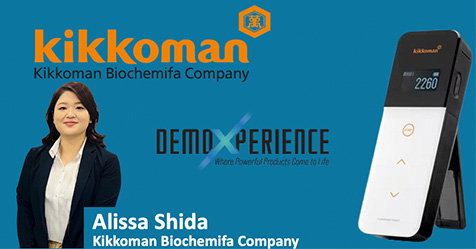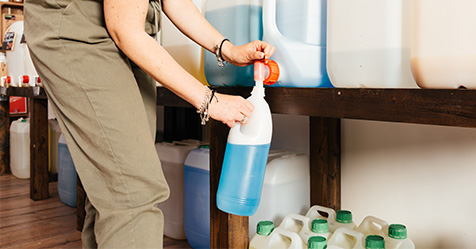Predictive cleaning is becoming a key driver of efficiency and service quality in facility management. A new frontier in this field is plant-based sensing, which uses living plants as “sixth sense” sensors that enable artificial intelligence (AI) systems to anticipate cleaning needs before humans notice them.
From static sensors to smart cleaning
Traditional cleaning methods rely on schedules, inspections, or responses to complaints. Some programs now integrate building occupant data and Internet of Things (IoT) sensors to modulate service frequency and resource deployment. Yet these systems remain limited by the range of sensor coverage, the thresholds set by humans, and delays before problems escalate.
Enter advanced biological sensing—known as phytosensing or plant-based sensing systems—which uses living plants fitted with electrodes to detect shifts in their electrical or physiological signals. Machine-learning algorithms interpret these changes as signs of stressors such as volatile organic compounds (VOCs), dust, pollutants, humidity, or variations in air quality.
An illustrative case is the WatchPlant project, which used ivy electrodes to classify ozone exposure with up to 94.6% accuracy. Other studies with tobacco and tomato plants tracked ozone via their tissue impedance, demonstrating that plants can detect pollutants that traditional sensors may miss.
When integrated with a facility’s sensor network and AI system, changes in plant behavior can provide an early warning of worsened indoor air quality, increased dust levels, and strained HVAC filtration systems. In short, the plant “senses” what humans or mechanical sensors often miss.
Smart sensing enables predictive cleaning
To translate plant signals into practical cleaning actions, several key elements must align:
- Sensor instrumentation and baseline calibration: Plants must be instrumented with electrodes or biosensors, and initial data gathering must establish their “normal” electrical or physiological signatures under stable environmental conditions.
- Continuous monitoring and anomaly detection: Live plant data is streamed alongside conventional environmental sensor inputs. Machine-learning models detect deviations from the norm—whether sudden or gradual—and assess the severity and classification of triggers.
- Trigger integration with cleaning management systems: Once a threshold is breached or a classification indicates an elevated pollutant or dust load, the system issues a cleaning alert—ideally sequenced by priority and routed via a computerized maintenance management system (CMMS) or cleaning task scheduler.
By embedding biological sensing within a broader digital-twin (a virtual representation of the physical environment) or AI-enabled facility management architecture, the plant-based layer becomes an added dimension in the predictive cleaning stack—augmenting motion sensors, humidity monitors, carbon dioxide sensors, and occupant data.
Much like city-scale digital twins that evolve by constantly ingesting live data from sensors and urban infrastructure, plant-based sensing in facilities grows more powerful over time. Longer monitoring builds richer baselines, helping AI refine predictions, reduce false positives, and reveal new patterns—making it a continuously learning layer within predictive cleaning.
Benefits that capture facility managers’ attention
Plant-based sensing brings several key benefits to predictive cleaning and overall facility management.
Greater sensitivity to airborne load: Although occupancy and traffic sensors can track gross usage patterns, they often miss subtle shifts until contaminants have already built up. Plant-based sensors can flag dust, pollutants, or HVAC irregularities significantly earlier. A 2023 study found that only 29% of U.S. and Canadian workers considered their workplace air “very clean,” underscoring the need for more responsive monitoring.
Reduced cleaning waste: Predictive cleaning guided by plant feedback helps avoid overcleaning or undercleaning. Cleaning is more closely aligned with actual environmental stress, ensuring resources are used efficiently while maintaining high standards of cleanliness.
Differentiated service models: For building service contractors and in-house custodians, integrating plant-augmented intelligence provides a unique value proposition: enabling the implementation of premium, outcome-based contracts rather than hourly or task-based agreements. Some AI-driven facilities are already restructuring service contracts around outcomes, including uptime metrics, cleanliness indices, and energy key performance indicators (KPIs).
Resilience and redundancy: The plant-based signal serves as a biological cross-check against traditional sensor faults, drift, or calibration errors. If a mechanical sensor fails or goes offline, the plant network still provides environmental continuity.
Bridging awareness in custodial operations
As with digital-twin technology in the manufacturing industry, where 86% of executives are aware of its value but fewer than half have initiated implementation, predictive cleaning with plant-based sensors will likely face an initial adoption gap. Awareness alone does not drive impact. Leaders must take deliberate steps to integrate these systems to realize measurable return on investment (ROI).
Successful deployment of plant-based sensing for predictive cleaning requires careful planning across several operational factors:
- Species and placement selection: Not all plants respond equally to environmental conditions. Use stable species like ivy or philodendron, and place sensors where the signal is strongest—typically on stems, leaves, or via tissue probes.
- Model training period: Expect a calibration phase of several weeks to months to establish stable baselines and train machine-learning models for each “micro-environment”—corridor, lobby, or restrooms.
- Integration with existing systems: The plant sensor network must feed into the CMMS or cleaning dispatch system. This requires application programming interface (API) connectivity, alert logic, and possibly edge analytics to minimize latency.
- Maintenance, drift, and durability: Electrodes may degrade or shift over time. Routine checks, calibration anchors, or self-diagnostic routines must be built into the system to ensure reliability.
- Scaling and ROI: Deploy broadly rather than only in trophy zones. Studies on predictive maintenance recommend broad sensor coverage to generate sufficient actionable alerts. If too few sensors or plants are used, alert rates drop and return on investment (ROI) falters.
- Training custodial staff: Crews need to understand how alerts propagate, how to act on prioritization cues, and how to provide feedback for signal validation.
A living layer in predictive cleaning
Plant-based sensing adds a new dimension to predictive cleaning by detecting changes that traditional systems often miss. For custodial teams, it enables more targeted interventions and reduces waste. For executives, it delivers measurable ROI and a smarter service model. By combining biological signals with AI in facility management, organizations can create a more responsive, resilient, and efficient cleaning process.




